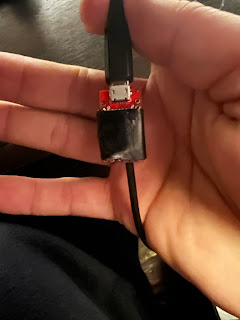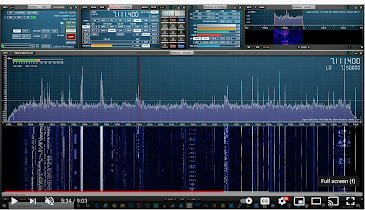Homebrew Cootie Key - Sideswiper
The "Cootie" key or "Sideswiper" is a double-sided straight key known for being difficult to master, but with some practice I’ve found it easier and more natural to use than IAMBIC paddles. There are some very nice professionally made cooties. I have the Titan made by W1SFR Steven Roberts, who is also one of the NCS for the sideswiper net. Begali, the “Ferrari” of morse code keys, has the Sculpture Swing which looks like a real work of art.
I was inspired to make my own homebrew cootie key after seeing so many homebrew pictures shared by members of the Straight Key Century Club over the past six months. I've put together a few kits like the Kent Single Paddle Key which can be wired like a sideswiper (mine is). But these single paddle keys just don't have the same "swinging" feel that I love in a true cootie key.
This my first attempt at a homebrew. You can make one for less than $5 at Home Depot depending on what you already have in your toolbox. I used a piece of composite wood flooring for the base (free sample), a packet of 1 inch L brackets, a packet of 8-32 1/2 inch machine screws to secure the hardware to the base.
I used a new Milwaukee Sawzall blade because I liked the American Flag on the side. For the finger pieces I used 2 wooden buffalo nickels that I had on hand from ETSY to give out to family and friends. I completed the key with 4 rubber bumper feet for electronics that are available in small packs on Amazon like these. The feet were added after the pics below were taken.
The contacts are wired with some 2-22 gauge solid copper telephone wire that I found in the attic a while back, and soldered to a spare 3.5MM TRS pigtail I had in the junk drawer. The rear contacts are soldered together on TIP and RING, and the front contact to the Ground/Sleeve. Finally I added some heat shrink to neaten the connections and add some strain relief to the cable.
The home brew key feels great and works like a champ! Next time I'd probably use a nicer base, some knurled brass screws, and a hacksaw blade with 24 TPI (teeth per inch) for a smoother finish.
73, Chris de WX7V



I was inspired to make my own homebrew cootie key after seeing so many homebrew pictures shared by members of the Straight Key Century Club over the past six months. I've put together a few kits like the Kent Single Paddle Key which can be wired like a sideswiper (mine is). But these single paddle keys just don't have the same "swinging" feel that I love in a true cootie key.
This my first attempt at a homebrew. You can make one for less than $5 at Home Depot depending on what you already have in your toolbox. I used a piece of composite wood flooring for the base (free sample), a packet of 1 inch L brackets, a packet of 8-32 1/2 inch machine screws to secure the hardware to the base.
I used a new Milwaukee Sawzall blade because I liked the American Flag on the side. For the finger pieces I used 2 wooden buffalo nickels that I had on hand from ETSY to give out to family and friends. I completed the key with 4 rubber bumper feet for electronics that are available in small packs on Amazon like these. The feet were added after the pics below were taken.
The contacts are wired with some 2-22 gauge solid copper telephone wire that I found in the attic a while back, and soldered to a spare 3.5MM TRS pigtail I had in the junk drawer. The rear contacts are soldered together on TIP and RING, and the front contact to the Ground/Sleeve. Finally I added some heat shrink to neaten the connections and add some strain relief to the cable.
The home brew key feels great and works like a champ! Next time I'd probably use a nicer base, some knurled brass screws, and a hacksaw blade with 24 TPI (teeth per inch) for a smoother finish.
73, Chris de WX7V






Comments